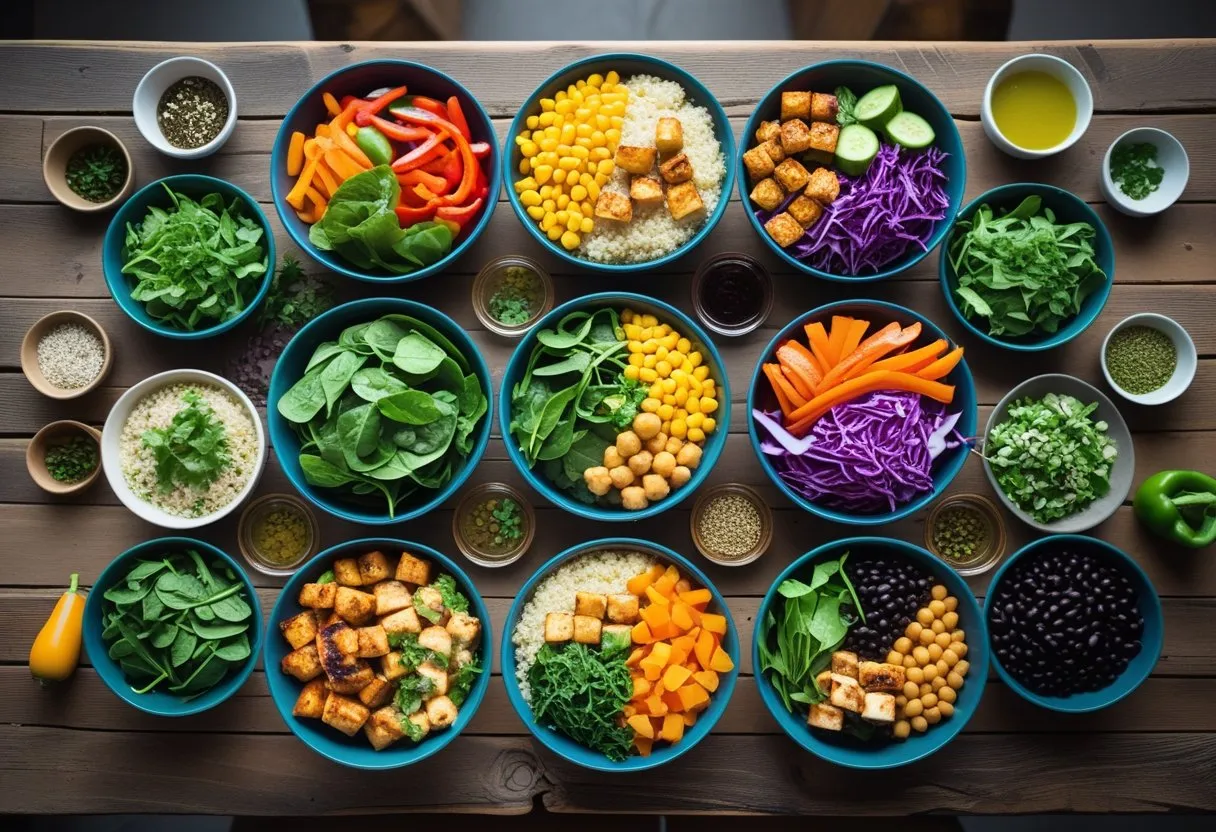Rainbow Veggie & Protein Bowls: Mix & Match Guide for Balanced and Flavorful Meals
Rainbow Veggie & Protein Bowls are a simple, healthy meal option that combines colorful vegetables, grains, and protein in one bowl. They offer a balanced mix of nutrients and flavors, making them great for quick lunches or meal prep. These bowls can be easily customized to fit different tastes and dietary needs.

The key to creating a great rainbow bowl is mixing and matching fresh veggies, wholesome grains, and proteins to suit your preferences. Whether choosing quinoa, chickpeas, lentils, or eggs, these bowls provide variety without complication.
By prepping ingredients ahead of time, anyone can build vibrant and nutritious bowls throughout the week. This guide will explore how to combine ingredients for convenience, health, and taste.
How to Build the Ultimate Rainbow Veggie & Protein Bowl
A great rainbow veggie and protein bowl starts with a good mix of fresh, colorful vegetables, a solid protein source, and filling whole grains. Adding healthy fats and toppings helps round out the meal and add flavor. Each part should be chosen to create balance, nutrition, and texture.
Choosing a Colorful Vegetable Base
The vegetable base sets the tone for the bowl. It should include a variety of colors and textures for both visual appeal and nutrition. Vegetables like cabbage, carrots, broccoli, cauliflower, bell peppers, cherry tomatoes, greens, and corn offer vitamins and fiber.
Raw or roasted vegetables work well. Roasting vegetables like broccoli and cauliflower brings out sweetness and adds a soft texture. Raw options such as shredded cabbage or mixed greens add crunch and freshness.
Using around 2 to 3 cups of vegetables per bowl ensures enough volume. Mixing colors like deep green broccoli with orange carrots and red bell peppers creates that signature rainbow look.
Selecting Proteins for Balance
Proteins provide energy and support muscle repair. A mix of plant-based proteins and animal proteins can work depending on dietary preference.
Options include chickpeas, lentils, black beans, edamame, tofu, chicken, beef, and shrimp. Plant-based proteins such as lentils and chickpeas are rich in fiber and protein, making the bowl more filling.
Using about 4 to 6 ounces of protein per bowl offers balance. Protein can be roasted, grilled, or simply steamed to keep the meal healthy.
Mixing protein types can also add flavor variety. For example, pairing chickpeas with grilled chicken or tofu with shrimp adds different textures and tastes.
Picking the Right Whole Grains
Whole grains provide carbohydrates for energy and improve satiety. They add bulk and a chewy texture to the bowl.
Good choices include brown rice, quinoa, farro, and barley. Quinoa is high in protein and cooks quickly, while farro and barley give a nutty taste and more chew.
Aim for about ½ to 1 cup of cooked whole grains per serving. Grains like brown rice and quinoa also absorb dressings and flavors well, tying the ingredients together.
Whole grains add fiber and complex carbs, making the bowl more balanced and suitable for meal prep or a quick lunch.
Layering Healthy Fats and Toppings
Healthy fats enhance flavor and help the body absorb vitamins. Common fats include avocado, nuts, seeds, and dressings with olive oil or tahini.
Adding sliced avocado or a drizzle of tahini dressing boosts creaminess. Seeds like hemp or pumpkin add crunch and nutrients.
Toppings can also include herbs or a fried egg for more protein and flavor. Healthy fats should be added in moderation, around 1 to 2 tablespoons per bowl.
Layering toppings at the end makes the bowl visually appealing and adds a final burst of texture and richness.
Mix & Match Guide: Flavor, Nutrition, and Meal Prep

Building rainbow veggie and protein bowls means balancing taste, nutrition, and ease of preparation. Choosing the right seasonings, customizing to dietary needs, and streamlining meal prep are key for success. Each element contributes to a flexible, healthy meal that fits any schedule or preference.
Seasoning Your Rainbow Bowl
Seasoning plays a crucial role in boosting flavor without adding unhealthy ingredients. Combining garlic powder, black pepper, cumin, paprika, salt, and fresh herbs like cilantro elevates roasted vegetables and grains like quinoa. A squeeze of lime adds brightness and balances spices.
Using olive oil not only helps with roasting but also supplies healthy fats. These fats improve nutrient absorption and add richness. For a sushi bowl, a light drizzle of soy sauce or sesame oil can add a savory note without overpowering fresh veggies.
Balancing seasoning to taste ensures each bite is flavorful and satisfying. It helps avoid monotony, especially when prepping multiple meals ahead.
Customizing for Dietary Preferences
Rainbow bowls are highly adaptable for different diets. For a gluten-free option, using quinoa or rice as the base works well. Adding plant-based proteins like chickpeas or tofu keeps the meal nutritious.
Meat eaters can incorporate grilled chicken or fish for extra protein. Vegan and vegetarian diets benefit from legumes, nuts, and seeds to maintain balanced macros.
Fresh ingredients like green onion and herbs can adjust flavor without added sugars or processed ingredients. Adjusting portion sizes and ingredient ratios helps meet personal calorie or nutrient goals efficiently.
Tips for Efficient Meal Prep
Preparing multiple bowls at once saves time during busy weeks. Start by roasting a big batch of mixed vegetables and cooking grains like quinoa in bulk.
Divide proteins, veggies, and seasonings into containers. Mix and match components each day to keep variety without extra cooking.
Using airtight containers keeps ingredients fresh. Adding dressings or lime juice just before eating preserves texture and flavor.
Batch prepping staples like seasoned chickpeas or marinated tofu offers ready-to-use proteins. This workflow reduces meal stress while ensuring healthy meals are always available.
